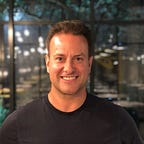Thrive in 2023 Practice #7: Sunlight
“The energy of the mind is the essence of life.” — Aristotle
Welcome to the Wells Performance Newsletter for July 2023. This year our focus will be on helping you to get flourishing and thriving by sharing health, wellbeing and peak performance science and strategies that you can easily add to your life!
Energy practice is where the rubber hits the road — where you learn how to transform your understanding of scientific concepts like mitohormesis into real-life action.
Let me start with the punchline: the energy practices I will take you through below are governed by a single principle: “A little is good and a lot is not.” That’s simple enough to say, isn’t it? Some of the most profound things in life are simple at their core.
It is July and for those of us in the northern hemisphere its summer!!! That means getting outside to enjoy the nice weather and getting a dose of sunlight.
Sunlight has loads of health benefits and is hormetic as well, meaning that sun exposure generates a low-level stress response that leads to positive adaptations at the cellular level.
But wait, isn’t this the same sun that emits the ultraviolet (UV) radiation that can cause skin cancer? Aren’t we supposed to avoid the sun to protect our skin and our health?
Well, yes and no. Remember our hormetic principle: a little is good and a lot is not. We don’t want to avoid sunlight entirely because it offers so many benefits, including an increase in overall energy. But we also don’t want to bake ourselves into ill health.
I’m guessing you’ve heard about the benefits of vitamin D — and sunlight is our best source of it. In scientific terms, vitamin D is a critical mediator of cellular oxidative stress, systemic inflammation, and mitochondrial respiration. The activated form of vitamin D, calcitriol, does so by activating gene transcription, cellular response elements, and second-messenger signaling cascades. Indeed, vitamin D deficiency is associated with increased oxidative stress, impaired mitochondrial function, and systemic inflammation, and increases the incidence and severity of various metabolic disorders including type 2 diabetes, autoimmune diseases, hypertension, and more.
(P.S. There are dietary sources of vitamin D, such as fatty fish, fish liver oils, egg yolks, and milk products that are fortified.)
Of course, as with all hormetic agents, too much sunlight is not healthy. For example, it suppresses the immune system causing autoimmune diseases and tumorigenesis, so what I am talking about here is short and moderate sunlight exposure and not letting your skin burn.
Sunlight also has many other benefits in addition to vitamin D production. For example, modest levels of UV radiation induce the synthesis of nitric oxide which reduces hypertension, improves cardiovascular health, and protects against oxidative stress and inflammation.
Finally, sunlight is remarkable for its effects on mood and mental health. It has been shown to cause the release of serotonin, significantly improving mood and relieving symptoms of several psychiatric mood and anxiety disorders.
So let’s take full advantage of this natural source of health and energy while minimizing its dangers. Get up, get outside, leave your fake light (phone) at home, and get real light into your eyes and brain!
How much time should I spend in the sun? It is thought that five to 15 minutes of sunscreen-free sunlight exposure, several times a week, is sufficient for your body to produce enough vitamin D without getting a sun burn. According to the Multiple Sclerosis Society of Canada, vitamin D is optimally synthesized from sunlight during the spring and summer months when the UV index is greater than 3.
What SPF should I wear? Sunscreen with a sun protection factor (SPF) of 15 or higher has been shown to reduce the risk of melanoma, carcinoma, and premature skin aging. SPF 30 sunscreen filters out 97% of UV rays that reach the skin, while SPF 50 only filters out 98%, making SPF 30 a great choice.
That’s it! Get outside and practice sun safety at the same time. You’ll boost your mood, build your health and replenish your energy stores.
We hope this information helps you get some perspective about energizing practices that lead you to an upward spiral of wellness!
If you want to track your sleep and your rest & recovery, please check out our VIIVIO app for peak performers! Here’s an article on how you can use VIIVIO to track your recharging.
If you want to learn more about increasing your energy levels, I cover that topic in the third chapter in my new book Powerhouse: Protect Your Energy, Optimize Your Health and Supercharge Your Performance.
Have a great month!
